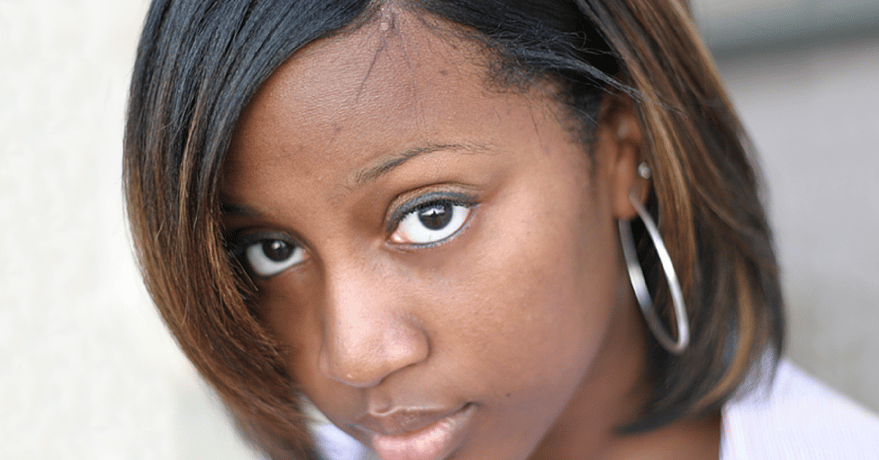By Jeff Waite on Aug 7, 2016 8:30:00 PM

Can wigs for black women look natural? And if so, do they always have to be made out of human curly hair to look good?
While it is true that curly hair is more predominant in the african American population than other hair types, it’s also true that variations do exist. Not only do some women of color have natural straight or wavy hair, but even curls can be classified into different categories depending on their properties.
And what’s so important about hair types? Well, that knowing what category your hair belongs to goes a long way when it comes to choosing a natural looking human hair wig.
Let’s talk about those different categories for a bit, shall we? If we wanna talk hair types, then we must talk about a fellow that goes by the name Andre Walker. Walker is Oprah’s personal hair stylist, and he agrees with us by saying that before doing anything to your hair, you should know exactly what you're working with so you can make the best choices for styling and hair treatment.
And by looking at Oprah’s hair, it’s kinda obvious that Walker knows what he’s talking about
Andre came up with a classification system for natural human hair types that goes something like this: there're four main types and then there’s letter coded subtypes (1a, 1b, 1c, and so on)
Type 1 - Straight Hair
This hair is straight as they come and it’s not too common in women of color or women of mixed african ancestry in general. While there are some black women with natural type 1 hair, most women of color achieve this type of hair with the help of a press, hair extensions or a wig.
The only difference between 1a hair, 1b hair and 1c hair is the thickness of the hair and the amount of frizz. 1a stands for thinner and frizz-free hair, with 1c being the thicker and the one that gets the most frizz of the three.
Type 2 - Wavy Hair
This hair type is known to be soft, has deep waves and has little to no curl at all. Other tell-tale signs of type 2 hair are soft “S” shaped waves or curls throughout the hair, and that type 2 hair tends to stay close to the scalp: it won’t bounce up even when layered.
Again, the letter subclassification only conveys how coarse and style resistant the hair is: 2a for softer and easier to style hair and 2c for coarse and frizzy hair.
Type 3 - Curly Hair
Curly or type 3 hair is unique in that I has a really defined, and springy “S” pattern to it, but it’s also really soft and fine. Curly hair is very soft and nice to the touch. Defining qualities: its looks straight when wet but curls up as it dries, and there’s usually tons and tons of it. The “S” shaped pattern is way more noticeable in type 3 hair than in type 2 hair, and type 3 hair is usually a little bit bouncy.
The letter classification remains the same.
Some famous women of color sporting type 3 hair are Alicia Keyes, Jada Pinkett-Smith and Tracee Ellis Ross
Type 4 - Coily/Kinky Hair
Kinky hair is the most textured of all the women of color hair types. It’s defined by its highly curly and wiry texture. Due to it’s tight coil and how dry it can be, type 4 hair is very, very fragile and should be treated with lots of care.
Type 4 hair is known for its lack of sheen and it’s ability to shrink up to 80% of its actual length. There’s a myth that this type of hair won’t grow very long. And that’s all that is, just a myth, because it can grow to mid-back lengths.
Some famous examples of type 4 hair: Nathalie Emmanuel who plays Missandei on Game of Thrones, and famous American musician Esperanza Spalding.
So now we know that women of color can have a very wide array of natural hair textures, but you want to know what the craziest part is?
Hair replacement methods can replicate each and every of these hair types. Yup, from 1a to 4c, good hair replacement providers can do them all.
Good hair replacement providers can match the exact color, texture, density and length of the sample you send them. So pairing a high-quality human hair wig with a killer stylist can ensure that your wigs blends right in with your natural hair and looks.
So can human hair wigs for black women look natural? Yes, they absolutely can. With matching, good-quality Remy human hair and the help of a professional stylist, there’s no hairstyle a wig can’t achieve. If you’re thinking about making a purchase on a hair system but you still have some doubts, feel free to check our Women of Color Buyer’s Guide out, it’ll answer all of the questions you might have about hair replacement options and the industry as a whole.







